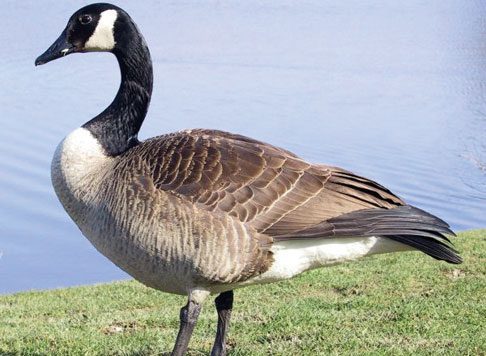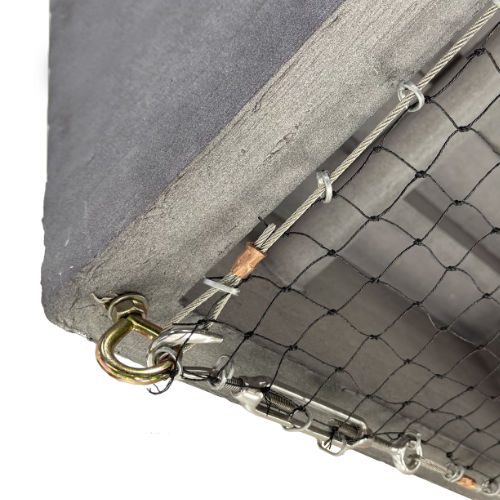Goose Control

Goose Identification
By definition, Canada Geese are not classified as pest birds and are afforded protection by Federal & State agencies. Nonetheless, Canada Geese (often incorrectly referred to as “Canadian Geese”) are increasingly becoming the scourge of suburbia as their numbers have grown in the past decade from only a few thousand to hundreds of thousands of these birds. In fact, the familiar V shaped squadron of honking geese heading south is becoming a rare sight. Country Clubs and business parks offer pristinely manicured lawns and ponds providing an ideal habitat and effectively modifying their migration cycle. Geese are very opportunistic and easily exploit the new ‘easy living’ conditions found in an urban environment.
There are at least 10 or 11 subspecies of Canadian geese, all similar in color pattern with long black neck and head with large white cheek patches meeting under the throat. The birds’ brown-gray body has a pale to dark breast and underparts while the black tail has white upper and undertail coverts. The bill and feet are also black. The bird varies in size from 22 to 48 inches long and weighing in from 3-4 lbs. all the way up to 24 pounds.
Goose Damage
Geese can cause damage to agricultural crops year round, either by trampling or consumption. Aesthetic damage to suburban lawns, golf courses, etc., is incalculable. Geese are also a health hazard- fouling reservoirs and ponds. A larger threat is air safety. Geese are one of the main birds involved in airline bird strikes worldwide.
Goose Control
Non-migratory Canada Geese are difficult to remove. Once established, immediate corrective landscaping and behavioral modification is imperative: Remove cover shrubbery; use herbicides to eliminate aquatic vegetation; and reduce fertilizer, especially around pond area, to make grass less nutritionally attractive. Introduce professional-grade goose repellents/deterrents like audio deterrents, visual deterrents, and taste deterrents. Visual scare products like Flash Tape combined with Avian Control taste deterrent (an effective goose repellent spray) should be employed as soon as the birds enter the area, varying in location and type. For more established flocks audio scare devices like Bird Gard or Extreme Ultrasonic System that project a variety of sounds through several speaker locations in a random pattern should be set up at strategically placed intervals. All systems require constant re-enforcement and should be relocated frequently to remain a convincing threat to the birds. Physical barriers such as overhead Gridwire and 4″ mesh StealthNet can be extremely effective barriers but are site specific. These grids can be installed above water surface to prevent landing. Fencing made of Gridwire (.96mm) provides a discrete barrier to dissuade geese from entering property (especially from water areas) and can be electrified for increased effectiveness. Wire fencing applications should begin approximately 1′ off the ground with successive strands approximately 1″ above the last to a height of at least three feet. Four inch mesh StealthNet with 1/2″ reflective Flash Tape hanging from it can also be utilized above and around ponds and grassy areas.
Goose Nesting
Nesting sites are typically near water with protective vegetation in close proximity. Planter boxes on high rise office building balconies in campus like settings are quickly becoming a nesting site of choice. Geese are extremely aggressive, posting sentinels at nesting and grazing sites. Defense of nests can many times result in injury to people or pets who venture too close.
Goose Breeding
Female Geese usually lay one egg every other day during the 25 day spring mating season. The nest is abandoned a few days after hatching. Canada Geese are monogamous for life, but will re-mate upon the death of their mate.
Goose Cycles
Non-migratory or residential Geese, once established, prefer feeding at the nesting site, but will often fly long distances to and from favorite feeding grounds. Some feeding may occur during moonlit nights.


